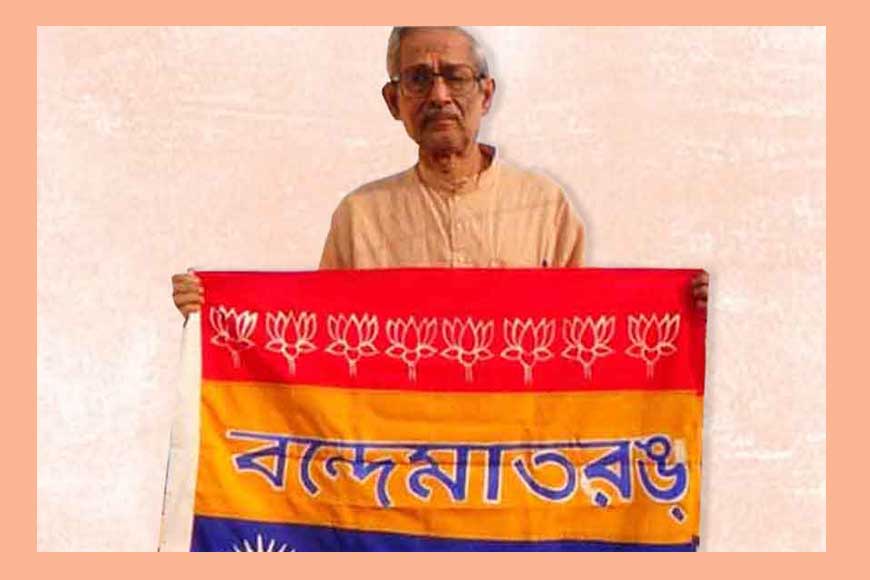man from Asansol who researched on 422 flags of the world

He was the first person to receive a doctorate degree for researching on flags, revolving around the history of 422 flags, including national flags of various countries, religious and political flags too. A former railway staff and resident of Gopalpur in Asansol, Kalishankar Bhattacharya was deeply passionate about flags!
He always held the national flag is the eternal symbol of sovereignty and national pride. The history of India’s tricolour, which was not available in the textbook, was written Bhattacharya. Historians of the country were taken aback after they found a vast and detailed collection of the history of varied flags in his research report. Even he gave a report on the evolution of our national flag that goes back to 17 types of flags proposed and the one accepted. He had highlighted these transitions of Indian National Flag.
The first national flag of India was introduced in 1883. The word ‘national’ also emerged in that era. The flag resembled a square and had a red sun right in the middle. This flag was proposed by Shirish Chandra Basu. On August 7, 1905, the national flag was first raised by the President of Anushilan Samiti, Barrister Pramathnath Mitra. The flag was hoisted in the Percy Garden Square of Kolkata in protest of the partition of Bengal. On the same day, the practitioners of the Swadeshi movement of Kolkata flew the flag secretly in front of the Governor House at Dharmatalla Park. It was a tri-coloured flag- red on top, yellow, in the middle and green at the bottom. There were eight petals painted on the red portion. ‘Vandemataram’ was written on yellow. The flag proposed by Swadeshis of Midnapur was red, yellow and blue. ‘Vandemataram’was written in Bengali. Under the British rule, several things were used to identify eight provinces like a blossomed lotus and eight petals.
In 1906, the flag proposed by the revolutionary organization Jugantar Samity Party Congress was red. Swami Vivekananda’s brother, Bhupendranath Dutta and brother of Rishi Aurobindo, Barindra Kumar Ghosh, proposed a flag which resembled the multiplicity of sword and trishul. There was a moon at the top and a chakra below. Madame Cama, a French citizen who hoisted the first proposed and accepted national flag outside the country at the International Socialist Conference in Stuttgart, Germany in 1902. Kalishankar Bhattacharya’s research report says that the flag was called Saptarshi Flag. Red was at the top, yellow in the middle and below with seven stars drawn on saffron.
On August 3. 1939, there occurred a major transformation of colours. There was saffron on top, white in the middle and green at the bottom with a chakra. In 1947, the Ashok Charka of Sarnath was incorporated. The Chakra with 24 spokes was painted in blue.
Kalishankar Bhattacharya was born in Bangladesh but came to Kolkata in 1948. Despite going through a financial crisis, he continued his studies. He used to wash utensils in a hotel. After doing a graduation from Bangabashi College, he got a job in Asanasol Railway. Realizing his potential and knowledge, he was brought to the Railway School Inspection Committee. The very sight of multiple countries’ flags in his father’s diary had encouraged him to develop an interest in the subject. He started researching on flags while studying which continued while he was working. After retirement, he submitted the first research report in 2008. In 2010, the then Governor MK Narayanan rewarded him and offered him a PhD degree. Kalishankar kept on working on his research till his death. His iconic work will be remembered forever.









